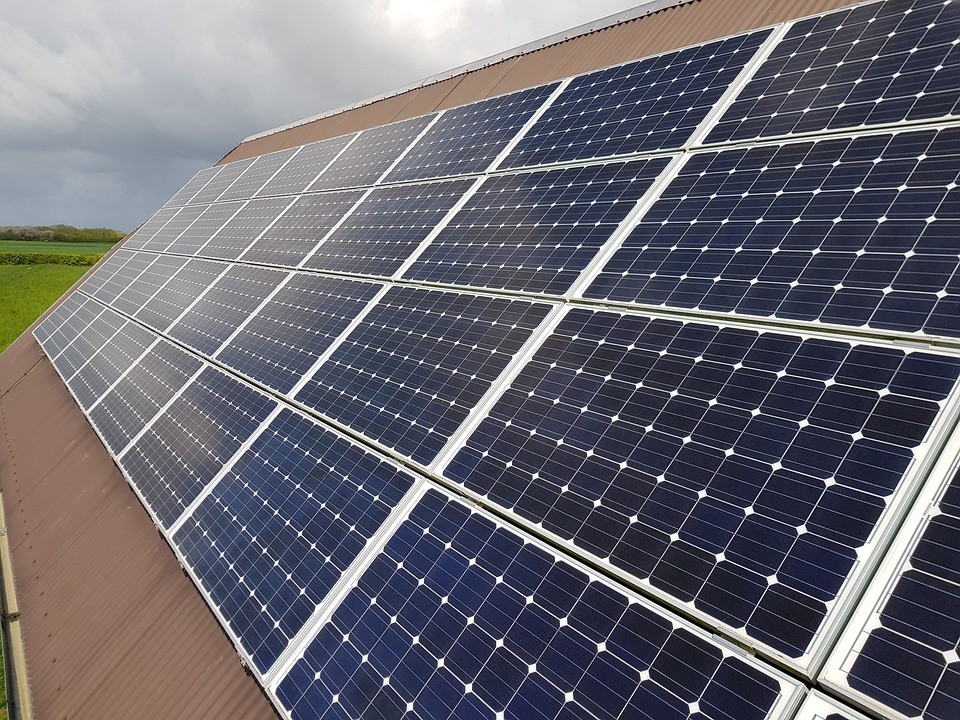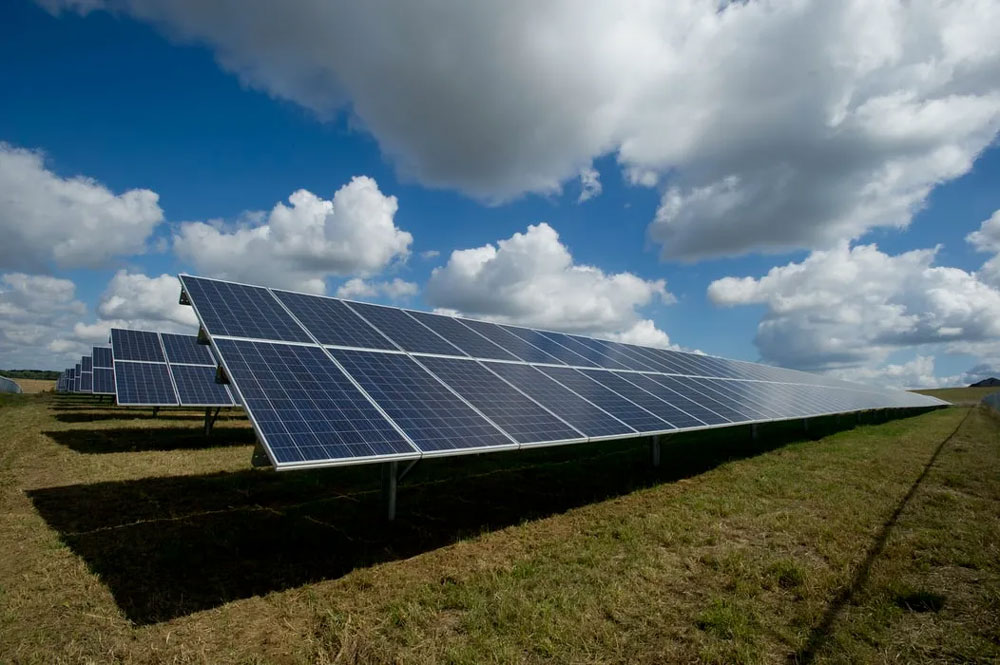Introduction
In The Pursuit Of Sustainable Energy Solutions, Mono Solar Panels Have Emerged As A Key Player In Harnessing The Power Of The Sun. This Guide Unfolds The Intricacies Of Mono Solar Panels, Exploring Their Design, Functionality, Advantages, And Applications. Join Us On A Journey To Understand How These Photovoltaic Marvels Contribute To A Cleaner And Greener Energy Future.
Unveiling Mono Solar Panels: A Primer On Photovoltaic Power
- Introduction To Mono Solar Panels: Mono Solar Panels, Short For Monocrystalline Solar Panels, Are A Type Of Photovoltaic Module Designed To Convert Sunlight Into Electrical Energy. Renowned For Their Efficiency And Sleek Appearance, These Panels Have Become A Popular Choice For Residential, Commercial, And Industrial Solar Installations.
- How Do Mono Solar Panels Work? At The Heart Of Mono Solar Panels Is The Photovoltaic Effect. When Sunlight Strikes The Semiconductor Material Within The Panel, It Generates An Electric Current. This Direct Current (DC) Is Then Converted Into Usable Alternating Current (AC) Through An Inverter, Making It Suitable For Powering Homes, Businesses, And More.
Mono Vs. Polycrystalline: Decoding Solar Panel Varieties

- Mono Vs. Polycrystalline: A Comparative Overview: Mono Solar Panels Differ From Their Polycrystalline Counterparts In The Type Of Silicon Used. Monocrystalline Panels Are Crafted From Single-Crystal Silicon, Offering Higher Efficiency And A Sleek Black Appearance. Understanding The Distinctions Aids In Making Informed Decisions Based On Specific Energy Needs And Aesthetic Preferences.
- Advantages Of Mono Solar Panels: Mono Solar Panels Boast Several Advantages, Including Higher Efficiency Rates, Better Performance In Low-Light Conditions, And A More Compact Design. The Monocrystalline Structure Allows For Greater Energy Production Per Square Foot, Making Them An Optimal Choice For Space-Constrained Installations.
Anatomy Of Mono Solar Panels: Breaking Down The Components
- Monocrystalline Silicon Wafers: The Building Blocks: The Core Component Of Mono Solar Panels Is The Monocrystalline Silicon Wafer. These Wafers Are Meticulously Sliced From A Single Crystal, Ensuring Uniformity And High Efficiency In Capturing Sunlight. The Single-Crystal Structure Minimizes Energy Loss During The Conversion Process.
- Metal Contacts And Conductive Layers: Channeling The Current: Metal Contacts, Typically Made Of Silver Or Aluminum, Are Applied To The Surface Of The Silicon Wafer. These Contacts Facilitate The Flow Of Generated Electricity, Channeling It Through Conductive Layers Within The Panel. This Intricate Network Ensures Efficient Electrical Conductivity.
- Anti-Reflective Coating: Maximizing Sunlight Absorption: To Enhance Sunlight Absorption, Mono Solar Panels Are Equipped With An Anti-Reflective Coating. This Coating Minimizes The Loss Of Sunlight By Reducing Reflections, Allowing The Panel To Capture A Higher Percentage Of Incoming Solar Radiation.
- Tempered Glass And Backsheet: Protection And Durability: A Tempered Glass Front Cover Provides Protection Against External Elements While Allowing Sunlight To Reach The Silicon Wafers. The Backsheet, Typically Made Of A Polymer Material, Acts As An Additional Barrier, Safeguarding The Internal Components From Moisture And Environmental Factors.
Efficiency Matters: Understanding Mono Solar Panel Ratings

- Efficiency Ratings Explained: Mono Solar Panels Are Renowned For Their High Efficiency Ratings, Often Exceeding 20% Or More. Efficiency In Solar Panels Refers To The Percentage Of Sunlight That Is Successfully Converted Into Electricity. Higher Efficiency Panels Translate To Greater Energy Production From The Same Amount Of Sunlight.
- Factors Influencing Efficiency: Several Factors Impact The Efficiency Of Mono Solar Panels, Including The Quality Of Silicon, Panel Design, And Manufacturing Processes. Advances In Technology And Manufacturing Precision Contribute To Continuous Improvements In The Efficiency Of These Solar Modules.
Applications Of Mono Solar Panels: Powering Diverse Spaces
- Residential Solar Installations: Mono Solar Panels Find Widespread Use In Residential Settings, Adorning Rooftops To Harness Sunlight And Power Homes. The Compact Design And High Efficiency Make Them Ideal For Residential Installations Where Space May Be Limited.
- Commercial And Industrial Solar Farms: The Scalability Of Mono Solar Panels Makes Them Suitable For Large-Scale Applications, Including Commercial And Industrial Solar Farms. These Expansive Installations Leverage The Efficiency Of Mono Panels To Generate Substantial Amounts Of Clean Energy.
- Off-Grid And Remote Power Solutions: Mono Solar Panels Play A Crucial Role In Off-Grid Scenarios, Providing Power To Remote Locations Where Traditional Power Sources May Be Unavailable. Applications Include Powering Remote Communication Towers, Agricultural Equipment, And Off-Grid Residences.
Installation Considerations: Maximizing Solar Harvest

- Optimal Placement And Tilt: Harnessing Sunlight Efficiently: Proper Installation Is Key To Maximizing The Efficiency Of Mono Solar Panels. Installers Consider Factors Such As The Orientation Of The Panels, Tilt Angle, And Potential Shading To Ensure Optimal Sunlight Exposure Throughout The Day.
- Inverter Compatibility: Converting DC To AC Power: Mono Solar Panels Generate Direct Current (DC), Which Needs To Be Converted To Alternating Current (AC) For Use In Homes And Businesses. Choosing A Compatible Inverter Is Essential To Efficiently Convert And Manage The Electricity Generated By The Solar Panels.
Longevity And Maintenance: Sustaining Solar Investments
- Durability And Longevity: Mono Solar Panels Are Designed For Longevity, With A Typical Lifespan Exceeding 25 Years. The Durable Materials, Including Tempered Glass And Corrosion-Resistant Frames, Contribute To The Panels’ Ability To Withstand Varying Weather Conditions.
- Routine Maintenance Practices: While Mono Solar Panels Require Minimal Maintenance, Routine Checks Ensure Optimal Performance. Cleaning The Panels Periodically To Remove Dust Or Debris, Inspecting For Potential Shading, And Monitoring Overall System Performance Contribute To Prolonged Efficiency.
Cost Considerations: Navigating The Economics Of Solar Power

- Initial Investment Vs. Long-Term Savings: The Initial Cost Of Installing Mono Solar Panels Is A Consideration For Many Prospective Users. However, It’s Crucial To View This Investment In The Context Of Long-Term Savings On Electricity Bills And Potential Financial Incentives Or Rebates Offered For Solar Installations.
- Government Incentives And Rebates: Governments Around The World Often Provide Incentives, Tax Credits, Or Rebates To Encourage Solar Adoption. Understanding Available Financial Support Enhances The Feasibility Of Investing In Mono Solar Panels And Promotes Sustainable Energy Initiatives.
Environmental Impact: Contributing To A Greener Future
- Reducing Carbon Footprint: Mono Solar Panels Contribute Significantly To Reducing Carbon Footprints By Generating Clean Energy Without Emitting Greenhouse Gases. The Transition To Solar Power Aids In Mitigating Environmental Impact And Fostering A More Sustainable Energy Ecosystem.
- Recycling And End-Of-Life Considerations: The Recyclability Of Mono Solar Panels Is An Essential Aspect Of Their Environmental Impact. Manufacturers And Industry Stakeholders Are Actively Developing Recycling Programs To Responsibly Manage End-Of-Life Solar Panels And Reduce Waste.
Conclusion: Empowering Tomorrow With Mono Solar Panels
Mono Solar Panels Stand As Harbingers Of A Sustainable Energy Future, Offering Efficient And Versatile Solutions For Harnessing The Power Of The Sun. From The Intricacies Of Their Design To Their Wide-Ranging Applications, Mono Solar Panels Illuminate The Path Toward Energy Independence And Environmental Stewardship. As Technological Advancements Continue To Enhance Their Efficiency And Accessibility, The Adoption Of Mono Solar Panels Becomes Not Just A Choice But A Commitment To A Cleaner, Greener, And More Sustainable World.
